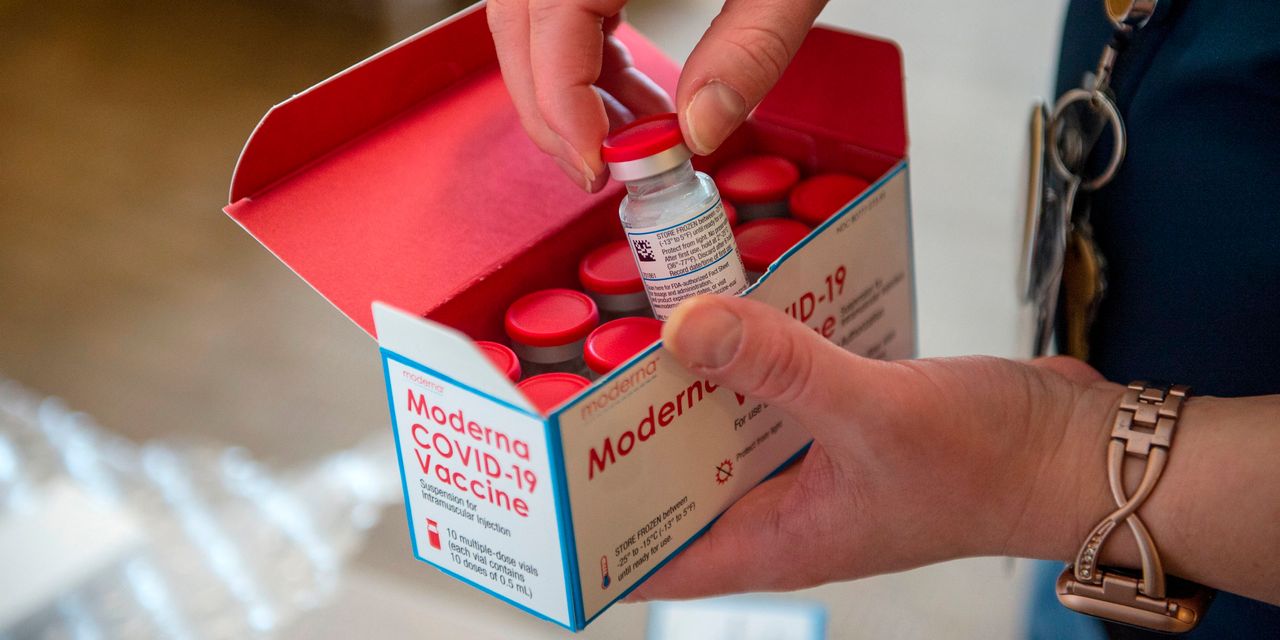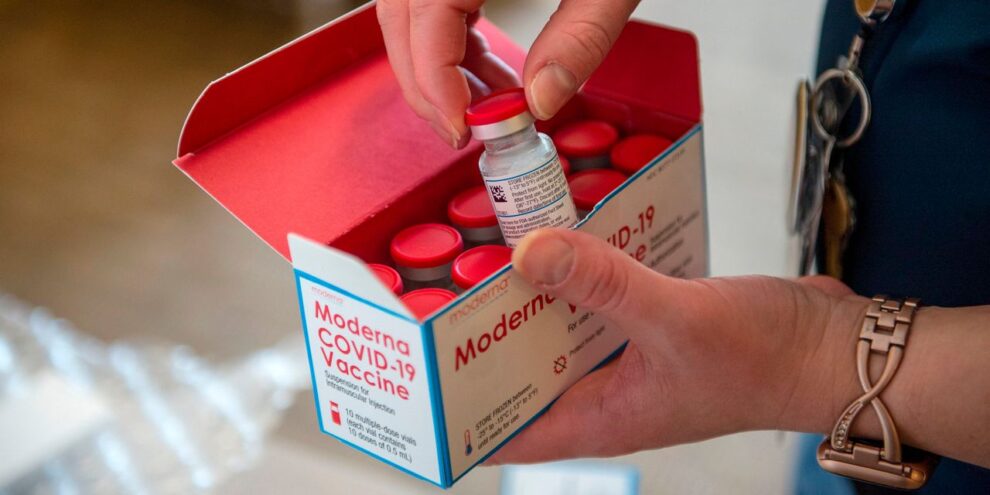
A government official suggested that Americans should be given one dose instead of two doses of Moderna Inc.’s COVID-19 vaccine in order to speed up the number of immunizations in the U.S.
Dr. Moncef Slaoui, chief adviser to Operation Warp Speed, the Trump administration program funding research and production of COVID-19 treatments and vaccines, on Sunday said the U.S. could double the number of immunized adults younger than 55 years old by giving them a single dose of Moderna’s vaccine.
“We know it induces identical immune response to the 100 microgram dose and therefore we are in discussion with Moderna and with the FDA,” he said, while on CBS’ “Face the Nation.”
Shares of Moderna MRNA, +5.44% were up 6% on Monday.
The Cambridge, Mass.-based biotech received emergency use authorization from the Food and Drug Administration for its COVID-19 vaccine on Dec. 18 and it said it has since shipped roughly 18 million doses of the vaccine in the U.S. Based on the design of the clinical trial and the FDA’s authority to require two doses, that’s enough to vaccinate nine million people.
A Moderna spokesperson said the data used to inform the EUA is based on a two-dose regimen. “At this point, we don’t have any further information to share about any potential ongoing regulatory discussions,” Ray Jordan, Moderna’s chief corporate affairs officer, said in an email.
The FDA did not immediately return a request for comment.
Outside medical experts are split on Slaoui’s rationale, with some citing the limitations of the clinical data informing his comments and others saying it could be a necessary decision given the daily rates of cases, hospitalizations, and deaths. At least 350,000 people in the U.S. have died from COVID-19, following the deadliest American month so far in the pandemic.
“The idea of deferring dose 2 makes a lot of sense in the short term,” Dr. Christopher Gill, an associate professor at the Boston University School of Public Health, said in an email. “It will still be important to give the second dose later, but delaying this is unlikely to matter much.”
Moderna’s Phase 3 clinical trial showed the vaccine had an efficacy rate of approximately 92% two weeks after the first doses were administered. The second dose of Moderna’s vaccine is given four weeks after the first dose, and then the vaccine is expected to be 94% efficacious.
“It’s not enough to hang your hat on for a major vaccination,” said Dr. Paul Offit, a pediatrician at Children’s Hospital of Philadelphia and a member of the FDA’s advisory committee on vaccines.
But in a peer-reviewed study published Dec. 30 in the New England Journal of Medicine recapping the Phase 3 clinical trial, which received financial backing from the U.S. government, the investigators said their findings “suggest that some degree of prevention may be afforded after the first dose,” but added that the trial was not designed to evaluate the efficacy of a one-dose version of the vaccine.
In an FDA document published during the regulatory process, the agency shared some data about efficacy after one dose that had been provided by Moderna. Gill points out that it’s important to look at efficacy rates after at least two weeks post-vaccination.
“The immune system takes some time to respond to the vaccine dose, particularly the first dose,” he said. “You can see in the figure that after 14 days that the incidence of cases is practically zero. “
The U.S. in December authorized two COVID-19 vaccines: Moderna’s mRNA-1273 and BioNTech SE BNTX, +3.94% and Pfizer Inc.’s PFE, -0.99% BNT162b2, both of which are two-dose mRNA vaccines that require two doses and had about 95% efficacy in clinical trials.
This is Moderna’s first FDA-authorized product. Shares of the company have soared 487.4% over the last year, while the S&P 500 SPX, -1.87% is up 16.2%.











Add Comment